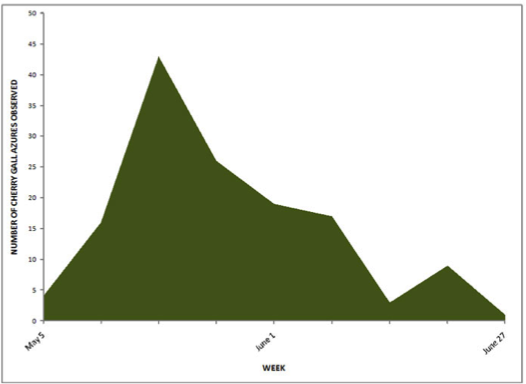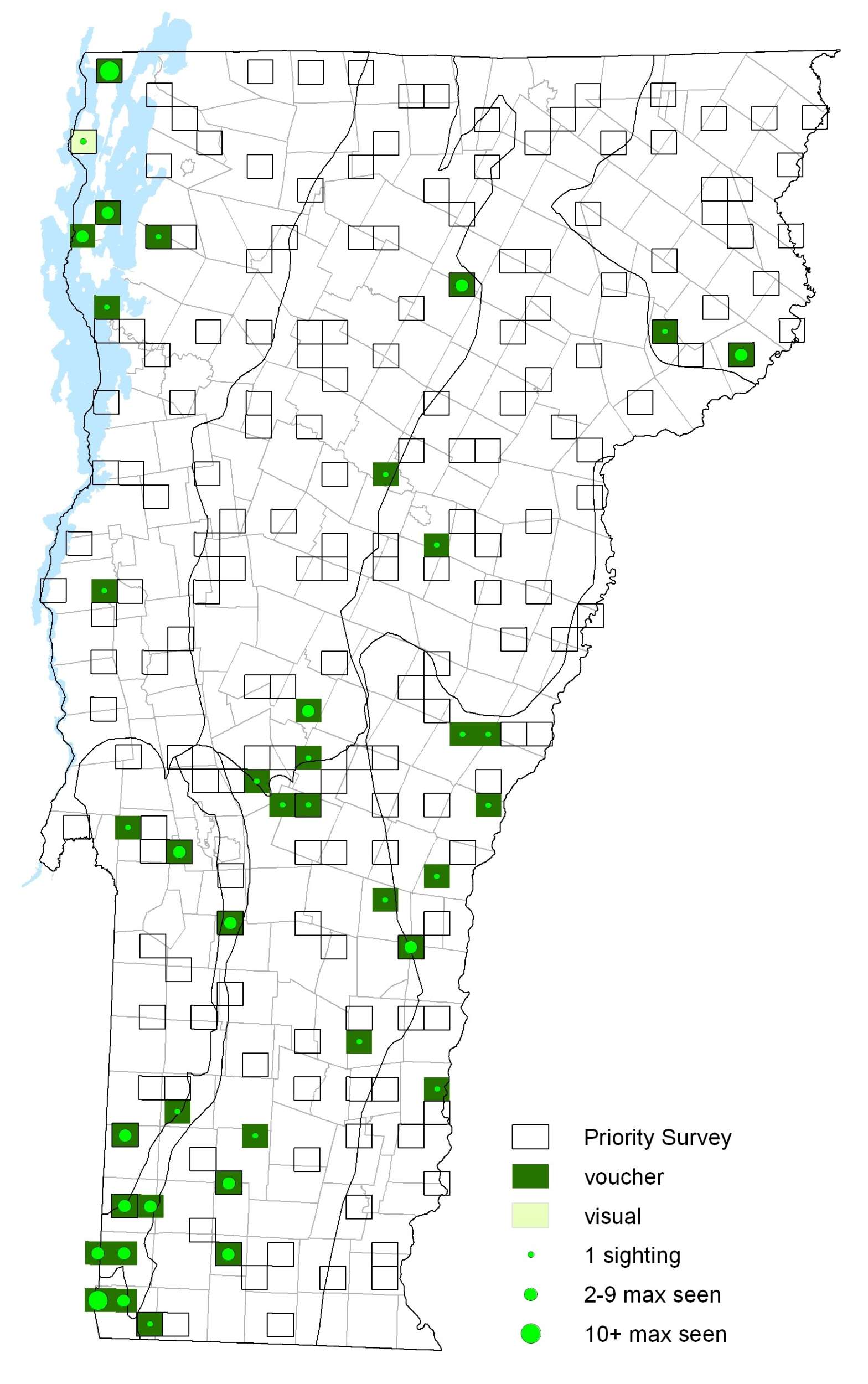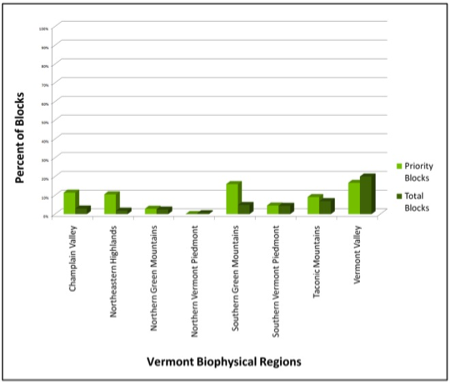|
Resident Conservation Status North American Range |
There is much yet to be learned about this newly recognized species. The Cherry Gall Azure is difficult to distinguish from other azures in the field and rather than relying solely on phenotypical characteristics for identification, it is important to take note of the date and habitat in which it was found. In addition, because its larvae feed on cherry galls, adult butterflies can often be found in the vicinity of cherry trees. Pupae overwinter
Identification
White dusting ventrally with well defined dark brown or black spots. Dorsal forewings metallic blue. Dorsal hindwings a lighter, dusty blue. Dark border on dorsal forewing more prominent in females than in males.
Flight
Overwintering pupae emerge in the late spring between the Northern and Summer Azure flights. Extreme dates: 5 May 2006 in Bennington and 23 June 2003 in Pownal (K. Hemeon).
Distribution and Habitat
VBS observers record it sporadically throughout Vermont. It was more common in central and southern Vermont. Because it is a newly recognized species, there are no historic records to report until specimen determinations are updated.
Habitats include open woods, abandoned fields and disturbed areas near hostplantssily. Larvae feed on the mite galls of cherry leaves, typically of Black Cherry (Prunus serotina) and Choke Cherry (Prunus virginiana). In Nova Scotia they have been reared on Bristly Sarsaparilla (Aralia hispida) and in other areas on Nannyberry (Viburnum lentago). During VBS reported nectaring at Silky Dogwood (Cornus amomum), and blackberry and dewberry (Rubus).







